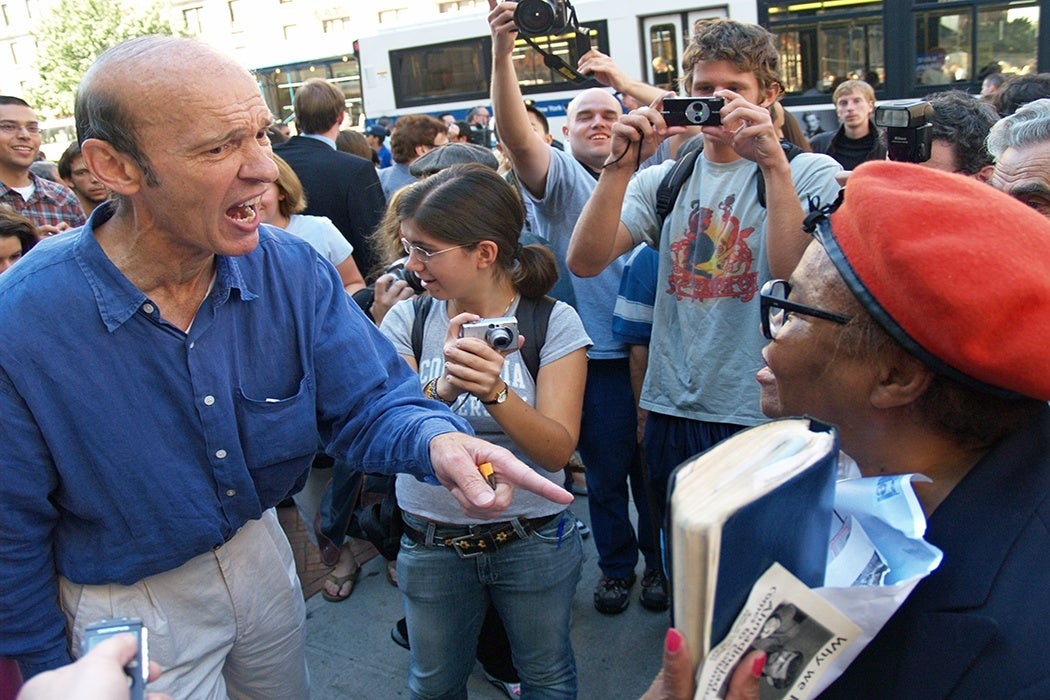In The News
In the New York Times this weekend, Julia Baird goes beyond “mansplaining,” to describe the “manologue”—a tendency for a man to wax on about a particular subject, regardless of the interest level of his audience.
Critics have talked about how we over-scrutinize (and under-research) women’s speech, often comparing it to male speech as though male speech were the norm. Baird’s and others’ work to describe and name male speech patterns and evaluate the effect of male speech patterns on listeners, tries to go a step further, disrupting the notion of male speech as normative.
Baird covers a lot of ground in her article: a male predilection to speak more often in the midst of larger groups, especially if that group is mostly male; rewards and punishments for speaking up, with men honoured for being assertive and women shamed for being aggressive; the tendency for men to talk longer and more often in formal settings; and what it takes to get women to speak up:
The conditions required for women to speak more are, not surprisingly, that more women are present, and that women are leading. According to a Harvard study, female students spoke more when a female instructor was in the classroom.
Although we’re a few years away from empirical rates of mansplaining, there is a huge breadth of research on gender-based conversations. One interesting angle of research looks at interruptions: their rate, their targets, and their character.
Further Reading from JSTOR
In 1989, Lynn Smith-Lovin and Charles Brody explored gender as a way of ranking social status in a given group. In this context, male interrupting behaviour is meant to show their social dominance, while female interrupting seems almost programmed to deny their socially-constructed inferiority:
We find support for the typical finding that there is considerable gender inequality in interruptions. But we see that this inequality is not the result of a sex difference in frequency of interruption, or even a simple dominance effect. Instead, it is produced because men discriminate in their interruption attempts, disrupting the speech of women far more frequently than that of men, while women do not discriminate, interrupting women and men equally often. This pattern carries over into the pattern of successful interruptions, since interruptions are more likely to succeed against women than against men (especially when interruptions are disruptive and negative in character).
From disruptive habits to our perceptions of them: one study from 1995 asked people to judge interruptions and the people who made them. James Orcutt and Diane Mennella found that, when women interrupted men, they were found to dominate the conversation, even though the man was talking 64% of the time. When the reverse was true (when a woman, responsible for 64% of the conversation, was interrupted by a man), there was no faux pas observed.
One other thing: women’s participation in the conversation was always overestimated by male judges, with or without interruptions. The authors conclude that gendered social norms put “women in the position of being both the victims and the accused of violations of the right to speak.”
Kriss Drass got a little more specific in 1986: he measured feminine and masculine traits to create a gender-identity spectrum instead of a binary, then measured interruptions and other interactions in same-sex conversations:
The use of overlaps and interruptions in conversation does appear to be a patterned verbal strategy associated with a more malelike definition of self. Through the use of this strategy, individuals, whether male or female, accomplish a form of dominance and control over an interactional partner by affecting access to a desirable resource: the speaking turn.
It appears that people of all genders have internalized that being heard is a man’s right and a woman’s aspiration.







